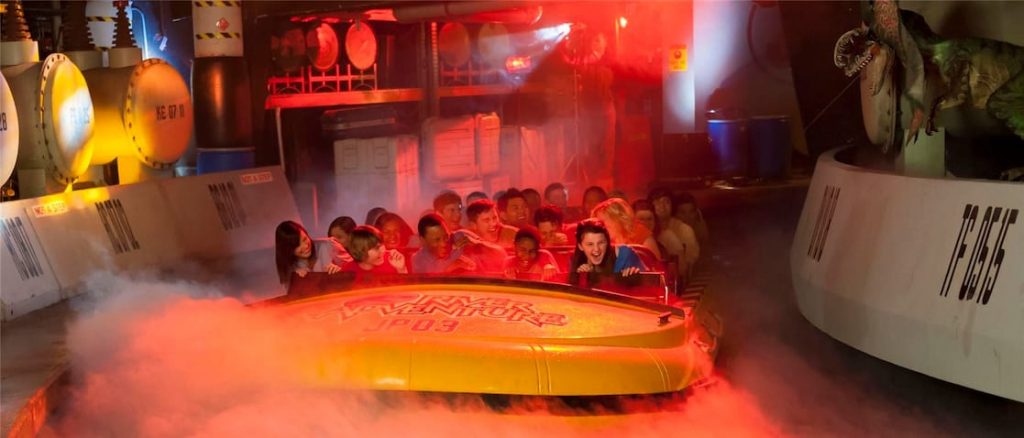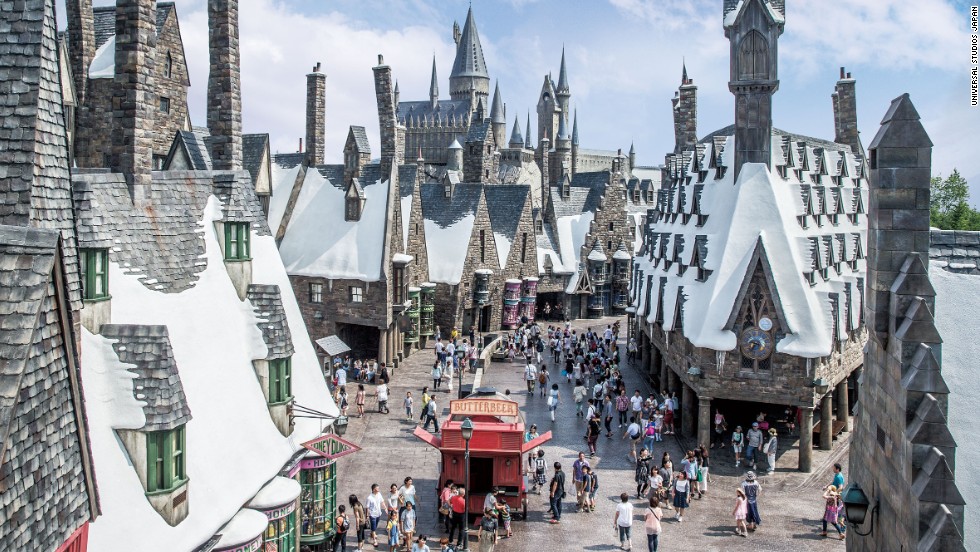One thing that immediately stood out to me in the reading was the mention of theme park rides being an example of lending to transmedia storytelling. “The media mix strategy disperses content across broadcast media, portable technologies such as game boys or cell phones, collectibles, and location-based entertainment centers from amusement parks to game arcades” (Jenkins 110). Entire theme parks capitalize on adding to stories with the use of characters, special effects, and audio effects on rides. Disney World, Disneyland, Universal Studios, and Six Flags are great examples of this. Nearly every ride at these parks are connected to some movie or show, where the rider is taken through a journey that allows them to be part of the world. Kids and adults alike can find enjoyment out of riding through a Winnie the Pooh storybook, or accompanying Spiderman in his journey through Queens, NY as they feel literal heat and air rushing in their faces. My personal favorite is the Jurassic Park ride in Universal Studio’s Islands of Adventure, where rides of a water-based ride are taken along a tranquil river with animatronic herbivores, until all hell breaks loose and deadly velociraptors are running around the boat. The big drop happens just after a reveal of a gigantic tyrannosaurs rex head, adding two layers of fear and exhilaration to the moment.

Josse de Kievith says in the preface to his literary review on this subject, “Transmedia design can expand the universe of those attractions, giving the established narrative more depth which allows consumers to stronger bonds with those narratives” (Kievith). When a fan of a media franchise partakes in the experience of a ride that takes them through a universe that they are familiar with watching, they can feel closer to the story, and therefore have something added to their entire experience with the franchise. When Harry Potter world in Universal Studios opened, fans of the franchise were ecstatic, immediately going to the attraction in droves. The crowds at that particular section of the park are still nearly unmanageable to this day. Even people who weren’t familiar with the book and movie series could feel like they were part of the universe, just by being among the incredible architecture and downing a Butterbeer in the central Florida heat.

I feel that, oftentimes, transmedia storytelling can be a helpful way to include a myriad of people, from different backgrounds and with different preferences and likes, as fans of a franchise. In the case of theme park rides, the only way that I can distinguish between Marvel Comic superheroes and DC comic superheroes is which theme park the different rides are in. Six Flags Great Adventure has roller coasters for DC Comics (for example, Batman, Superman, etc), and Universal Studios in Orlando, FL has roller coasters for Marvel Comics (Hulk, Spiderman, etc).
This is certainly a unique form of transmedia storytelling, and one that would certainly be interesting to look into further.
Word Count: 490
Works Cited
de Kievith, Josse. “Transmedia Storytelling & Theme Parks.” JOSSE DE KIEVITH – (REAL-LIFE) GAME DESIGNER, jossedekievith.weebly.com/transmedia-storytelling–theme-parks.html.
Jenkins, Henry. “Searching for the Origami Unicorn.” Convergence Culture: Where Old and New Media Collide, New York University Press, 2006, pp. 93–130.